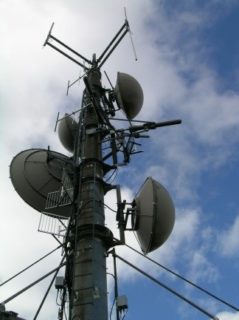
Overview
Genesis Energy engaged PSC to provide a frequency plan and installation specification to expand their Rangipo Power System (RPS) radio network capacity from 4E1 to 16E1 links. The additional capacity would meet the Genesis need for both PDH and Ethernet traffic, and assist in providing diverse traffic paths in the region for generation control.
Project Outline
The existing radio network comprised of six links operating on Nokia DMR, all in the 13GHz New Zealand X4 and X5 sub bands, and a 1E1 capacity link operating in L Band (1.5GHz).
The region is mountainous national park, a terrain that provided some advantages for frequency reuse but also some difficulties to contend with including long paths, heavy rainfall at times, vegetation obstruction from forest growth and reflections from across-water paths.
The objective was to maximise the use of the existing bands (except for the L Band link which needed more capacity than was available in L Band) and to minimise the need to procure new Outdoor Units (ODUs).
[Note: ODU’s are tuned devices with a limited bandwidth and for a given radio frequency band, such as the 12.75-13.25GHz X Band, they are normally supplied with a range of overlapping sub-bands. This has cost implications for both equipment and installation when new ODUs sub bands have to be procured, installed and commissioned as part of a network enhancement].
The project included new traffic modules for the additional E1 and Ethernet capacity, and changes to the supervisory system.
PSC Scope
The PSC scope of work included:
- Detailing the existing radio configuration and band usage
- Evaluation of possible radio frequency band plan options, and related equipment and installation implications, with the aim of minimising the need for new equipment and installations
- Provision of a proposed radio frequency band plan for Genesis approval
- Provision of installation specifications to allow step by step rearrangement of radio and multiplex equipment
- Provision of a materials list for use by Genesis in procurement of new materials
Outcome
The geography and location of the sites permitted a rearranged band plan using the existing equipment on the existing links, with alteration to polarisation at the antennas in some instances to reduce co-channel and adjacent channel interference to acceptable levels.
The upgraded link was able to be equipped in the same ODU sub band as the existing 13GHz links, hence avoiding having to procure additional spares.


